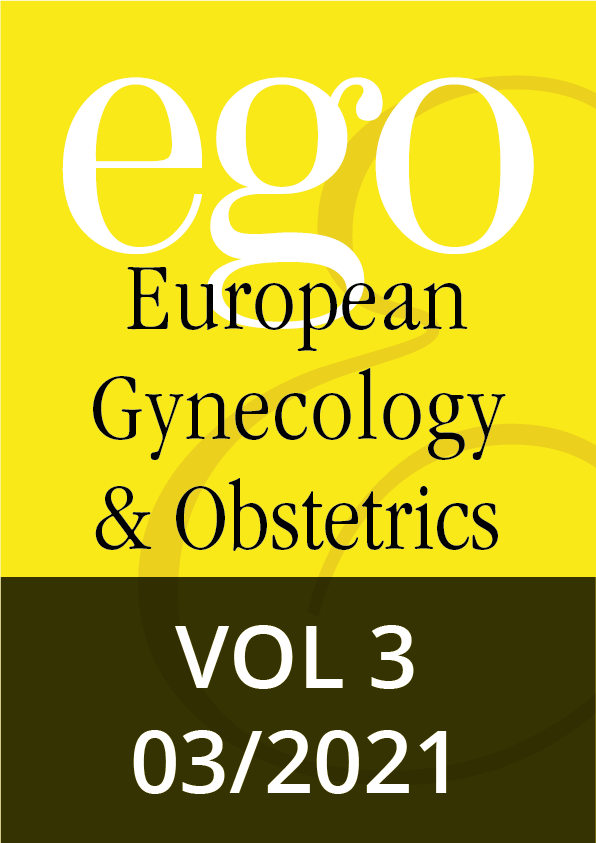Meta analysis, 114–124 | DOI: 10.53260/EGO.213031
Short reviews, 125–128 | DOI: 10.53260/EGO.213032
Case reports, 129–132 | DOI: 10.53260/EGO.213033
Case reports, 133–135 | DOI: 10.53260/EGO.213034
Case reports, 136–139 | DOI: 10.53260/EGO.213035
Case reports, 140–145 | DOI: 10.53260/EGO.213036
Original paper, 146–150 | DOI: 10.53260/EGO.213037
Original paper, 151–154 | DOI: 10.53260/EGO.213038
Risk factors for postpartum diabetes mellitus in Japanese patients with gestational diabetes mellitu
Original paper, 155–161 | DOI: 10.53260/EGO.213039
Middle interhemispheric variant of holoprosencephaly in a 21-week fetus: a case report
Abstract
Highlights: Middle interhemispheric variant (MIH) is a rare subtype of holoprosencephaly (HPE). The differential diagnosis between variants of HPE may be difficult. Prenatal MRI has a fundamental role in the diagnosis. Careful attention to specific neurosonographic features can help in early diagnosis. Holoprosencephaly (HPE) is the most common malformation of the forebrain in humans. It is a structural anomaly of the brain resulting from failed or incomplete forebrain division in the fourth week of gestation. According to De Myer’s classification, three types of HPE, of increasing severity, are described: lobar, semilobar and alobar. Milder subtypes of HPE include the middle interhemispheric (MIH) variant, also known as “synthelencephaly”, which is characterized by a midline connection of the two hemispheres in posterior frontal and parietal regions with separation of the anterior frontal and occipital lobes. Most severe HPE cases are diagnosed by ultrasound examination (US) and magnetic resonance imaging (MRI) during pregnancy. We present a case of MIH variant, diagnosed in a 21-week fetus by US and confirmed by MRI.
Keywords: Holoprosencephaly, middle interhemispheric, neurosonography., prenatal ultrasound, syntelencephaly
Citation: Cattani R.,Monacci F.,letto C.,Zandri S.,Giannini A.,Simoncini T., Middle interhemispheric variant of holoprosencephaly in a 21-week fetus: a case report, EGO European Gynecology and Obstetrics (2021); 2021/03:136–139 doi: 10.53260/EGO.213035
Published: September 1, 2021
ISSUE 2021/03

Meta analysis, 114–124 | DOI: 10.53260/EGO.213031
Short reviews, 125–128 | DOI: 10.53260/EGO.213032
Case reports, 129–132 | DOI: 10.53260/EGO.213033
Case reports, 133–135 | DOI: 10.53260/EGO.213034
Case reports, 136–139 | DOI: 10.53260/EGO.213035
Case reports, 140–145 | DOI: 10.53260/EGO.213036
Original paper, 146–150 | DOI: 10.53260/EGO.213037
Original paper, 151–154 | DOI: 10.53260/EGO.213038
Risk factors for postpartum diabetes mellitus in Japanese patients with gestational diabetes mellitu
Original paper, 155–161 | DOI: 10.53260/EGO.213039
